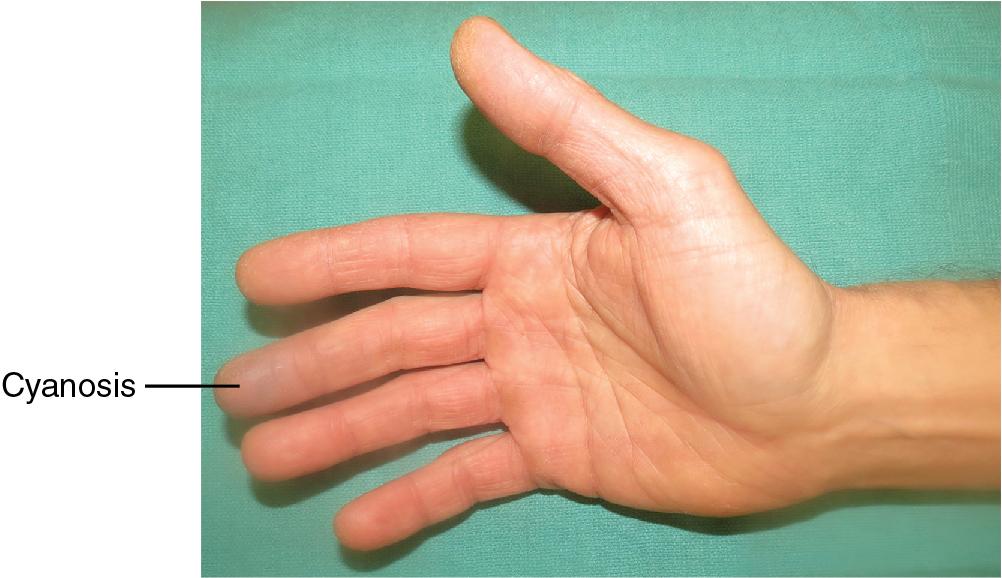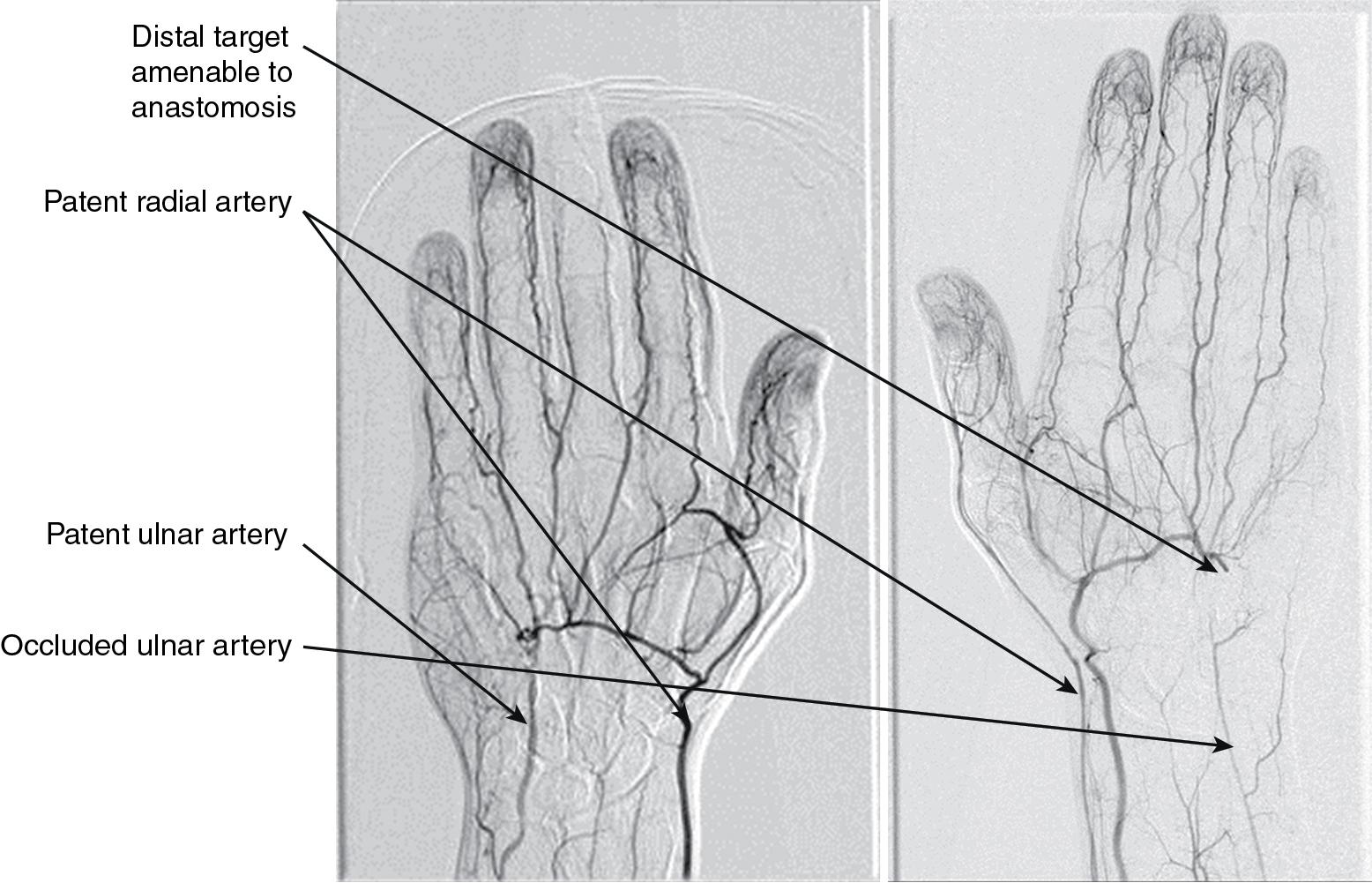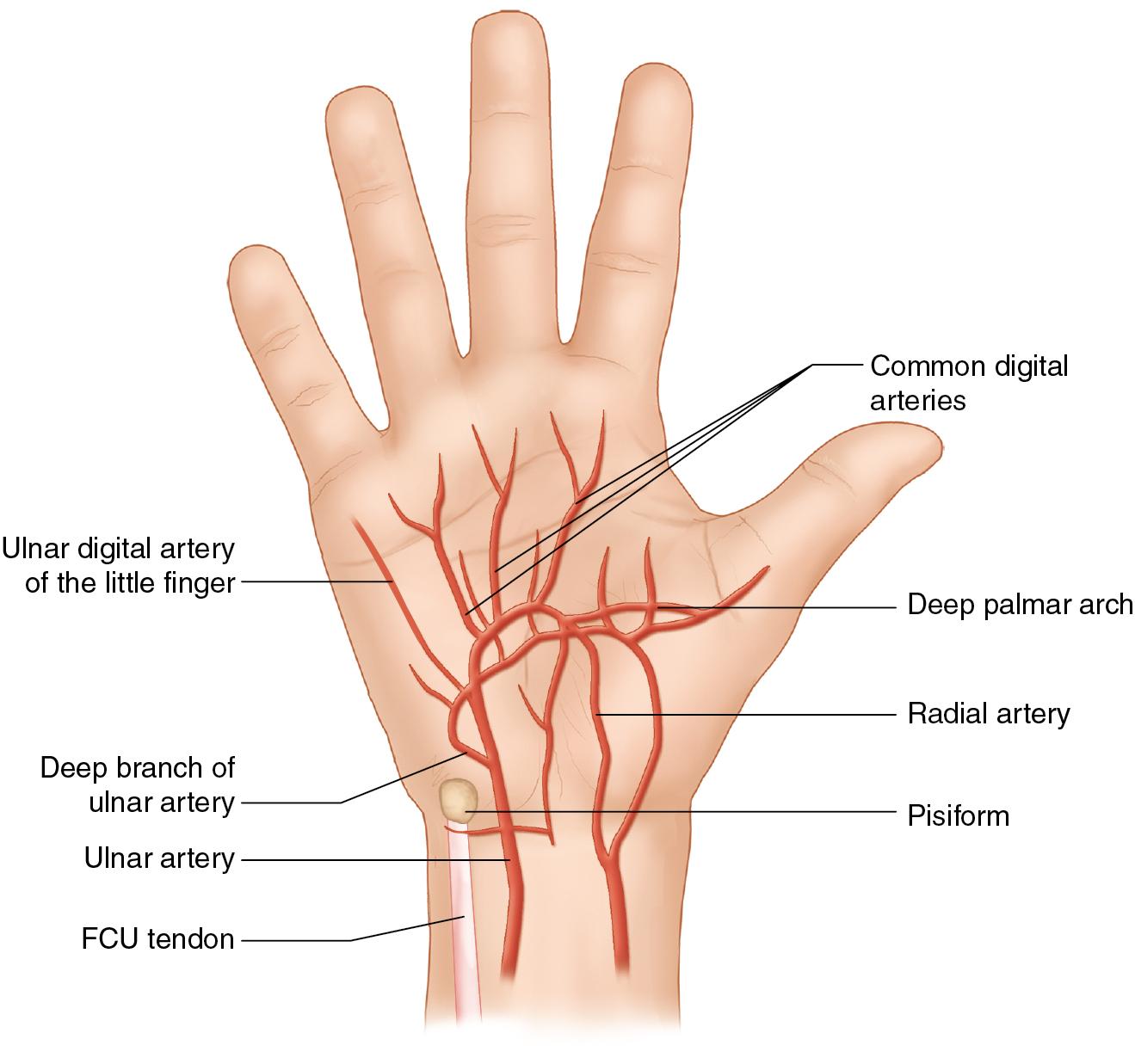Physical Address
304 North Cardinal St.
Dorchester Center, MA 02124
The ulnar artery bypass procedure with a vein graft is used to reconstruct an ulnar artery damaged from occlusion caused by Raynaud phenomenon or repetitive trauma to the hand known as hypothenar hammer syndrome.
For Raynaud phenomenon, the indications are similar to those in Chapter 96 , but there must be proximal and distal targets amenable to microsurgical anastomosis for this procedure to be indicated.
For hypothenar hammer syndrome, front-line therapies include behavior modifications such as smoking cessation and cold avoidance. Medications include aspirin and calcium channel blockers to help manage symptoms and prevent distal embolism of ulnar artery thrombus. In the presence of persistent symptoms or frank tissue loss, surgical reconstruction is indicated.
Similar to Chapter 96 , the hand should be evaluated for the presence of ischemic changes such as cyanosis, cold skin temperature, ulcerations, and frank necrosis and tissue loss ( Fig. 97.1 ).

An Allen’s test is performed to assess patency of the palmar arch. This can be done clinically by looking for capillary refill or using a Doppler probe to identify a signal on the thumb while the radial artery is occluded.
Various noninvasive examinations, such as Doppler imaging, computed tomographic (CT) angiography, and magnetic resonance angiography, are useful to evaluate the vascular lesions. Nevertheless, angiogram is still the standard and remains necessary for preoperative evaluation.
The angiogram is inspected to confirm the presence and define the extent of ulnar artery occlusion and plan for surgical bypass. Look for proximal and distal targets amenable to microsurgical anastomosis. Typically, the proximal target is readily available given the long course of the proximal ulnar artery. The distal target can be more difficult to identify if the occlusion is at a bifurcation of the superficial arch and common digital artery ( Fig. 97.2 ).

Occluded common digital arteries can be anastomosed using side branches of the vein graft or end-to-side repair.
Preoperative vein mapping can be used if the patient’s habitus precludes vein identification. This can often be done in the preoperative holding bay using the ultrasound machine (see “Positioning”). However, this is typically not necessary. The architecture of the vein graft can be determined during dissection, and select side branches should be preserved for anastomosis.
The ulnar artery arises just distal to the elbow where the brachial artery bifurcates into the radial and ulnar arteries, but some patients have a high bifurcation in the proximal brachium. Immediately after forming, the ulnar artery gives off two recurrent arteries and the common interosseous artery and then continues distally and ulnarly between the superficial and deep finger flexors until it reaches the ulnar forearm, where it remains underneath the flexor carpi ulnaris (FCU) for most of its course. The diameter of the ulnar artery is about 2 mm, and the diameter of its two accompanying veins is about 1 mm.
The ulnar artery joins the ulnar nerve in the proximal forearm. It is important to protect this structure during the procedure.
In the wrist, the artery lies in the Guyon canal, radial to the pisiform and ulnar to the hook of hamate, where it is covered by the volar carpal ligament. After giving off the deep branches, the ulnar artery continues as the superficial palmar arch in the palm ( Fig. 97.3 ).

The superficial arch gives rise to the finger’s digital arteries. The ulnar artery gives off the ulnar digital artery to the little finger and three common digital arteries at the level of the metacarpophalangeal joint ( Fig. 97.4 ; see also Fig. 97.3 ).

The superficial arch lies deep to the palmar aponeurosis and palmaris brevis and superficial to the flexor brevis minimi digiti muscle, flexor tendons, and lumbrical muscles (see Fig. 97.4 ). The superficial palmar arch is considered complete when it has the communicating branches from the deep palmar arch, radial artery, or median artery in about three-quarters of cases. An incomplete superficial palmar arch occurs in the remaining cases.
Become a Clinical Tree membership for Full access and enjoy Unlimited articles
If you are a member. Log in here